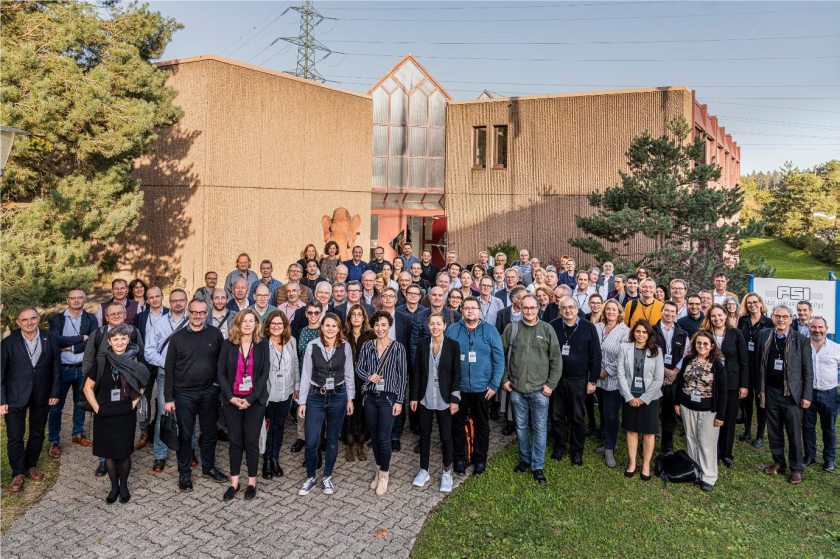LEAPS research infrastructures to tackle societal crises

More than 180 scientists, research facilities directors, policymakers and industry representatives travelled to Paul Scherrer Institute from across Europe to attend the LEAPS Plenary Meeting. © Markus Fischer/PSI
Against a backdrop of the energy crisis, scientists and policymakers convened at Paul Scherrer Institute PSI in Switzerland and set out a vision for European accelerator based photon sources to address current and future societal challenges together.
“LEAPS facilities find themselves in a unique position of simultaneously needing to adapt as heavy energy users whilst being an integral part of the solution.” So said Leonid Rivkin from the Paul Scherrer Institute PSI, Switzerland, Chair of the League of European Accelerator-based Photon Sources (LEAPS). Speaking at the 5th LEAPS plenary meeting, Rivkin commented that planned facility upgrades to leading European research infrastructures will help favourably shift the balance, providing more X-rays for more science with less energy consumption.
The current energy crisis was an important theme during the 5th LEAPS plenary meeting, held at the Paul Scherrer Institute from the 26th – 28th October 2022. The meeting welcomed more than 180 scientists, policy makers and industry representatives from across Europe. This included directors of the 19 member European accelerator-based photon facilities – i.e. synchrotron light sources and free electron lasers (FELs) - as well as high-level representatives of the European Commission.
read more >
PSI
https://www.helmholtz-berlin.de/pubbin/news_seite?nid=24187;sprache=en
- Copy link
-
Green fabrication of hybrid materials as highly sensitive X-ray detectors
New bismuth-based organic-inorganic hybrid materials show exceptional sensitivity and long-term stability as X-ray detectors, significantly more sensitive than commercial X-ray detectors. In addition, these materials can be produced without solvents by ball milling, a mechanochemical synthesis process that is environmentally friendly and scalable. More sensitive detectors would allow for a reduction in the radiation exposure during X-ray examinations.
-
Electrical energy storage: BAM, HZB, and HU Berlin plan joint Berlin Battery Lab
The Federal Institute for Materials Research and Testing (BAM), the Helmholtz-Zentrum Berlin (HZB), and Humboldt University of Berlin (HU Berlin) have signed a memorandum of understanding (MoU) to establish the Berlin Battery Lab. The lab will pool the expertise of the three institutions to advance the development of sustainable battery technologies. The joint research infrastructure will also be open to industry for pioneering projects in this field.
-
BESSY II: Insight into ultrafast spin processes with femtoslicing
An international team has succeeded at BESSY II for the first time to elucidate how ultrafast spin-polarised current pulses can be characterised by measuring the ultrafast demagnetisation in a magnetic layer system within the first hundreds of femtoseconds. The findings are useful for the development of spintronic devices that enable faster and more energy-efficient information processing and storage. The collaboration involved teams from the University of Strasbourg, HZB, Uppsala University and several other universities.
